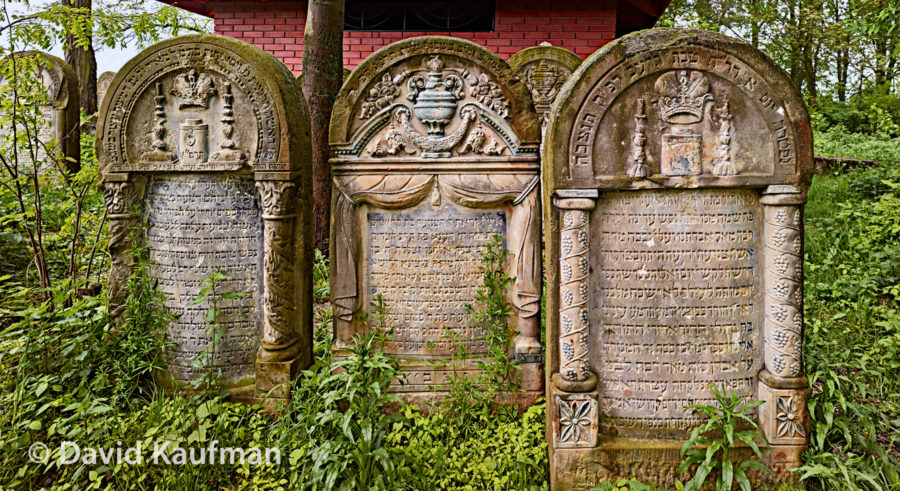by JULIAN AND FAY BUSSGANG
From Gazeta, A quarterly publication of the American Association for Polish-Jewish Studies and Taube Foundation for Jewish Life & Culture, Summer/Fall 2020 issue
For almost thirty years, Toronto-based photographer and filmmaker David Kaufman has been documenting Jewish heritage sites in Eastern Europe. Kaufman made his first trip to Poland in 1992 to make Hidden Children, a documentary about child survivors of the Holocaust. A decade later, he visited Poland to make films about the Warsaw Ghetto Uprising and about the Łódź Ghetto. He has since returned to Poland multiple times to photograph memorial sites— including Jewish cemeteries, synagogues, former Jewish neighborhoods, and other sites related to the Holocaust. His work now extends to areas once in Poland but now in Western Ukraine.
Kaufman was captivated by the beauty of the many memorial buildings and objects that he found in Eastern Europe. He was also struck by the realization that although few Jewish inhabitants remain there, the quantity and quality of the material culture is vast, while the ability to preserve many historical sites is inadequate. He feels that it is therefore important that they be documented. In partial fulfillment of this mission is the recent traveling exhibit, The Posthumous Landscape: Jewish Historical Sites in Poland and Western Ukraine, most recently at Congregation Darchei Noam in Toronto (through August 2020).
Kaufman’s photos and films about vestiges of Polish-Jewish life are detailed and moving. In the exhibit, Warsaw is represented by photos of the Jewish cemetery and of lesser-known views of the ghetto wall on Waliców Street and of run-down Brzeska Street in the former Jewish district of Praga. Unlike Warsaw, many more vestiges of Jewish life can be seen in Łódź, as only a small portion of the former ghetto area north of the city center was destroyed. A significant portion of the buildings in Bałuty, the poor district at the heart of the former ghetto, remain intact and substantially unaltered. The photos of Łódź show the Bracka Street Jewish cemetery, the Poznański Palace, and the Radegast railway station, where the exodus of the final liquidation of the Łódź Ghetto took place. Displays include photos of restored synagogues from Łańcut, Bobowa, and Kraków (the Progressive Tempel Synagogue) as well as monuments from the cemetery in Ożarów.

Three Ornate Polychrome Monuments in the Jewish Cemetery of Ozarow, Poland, May 2014
